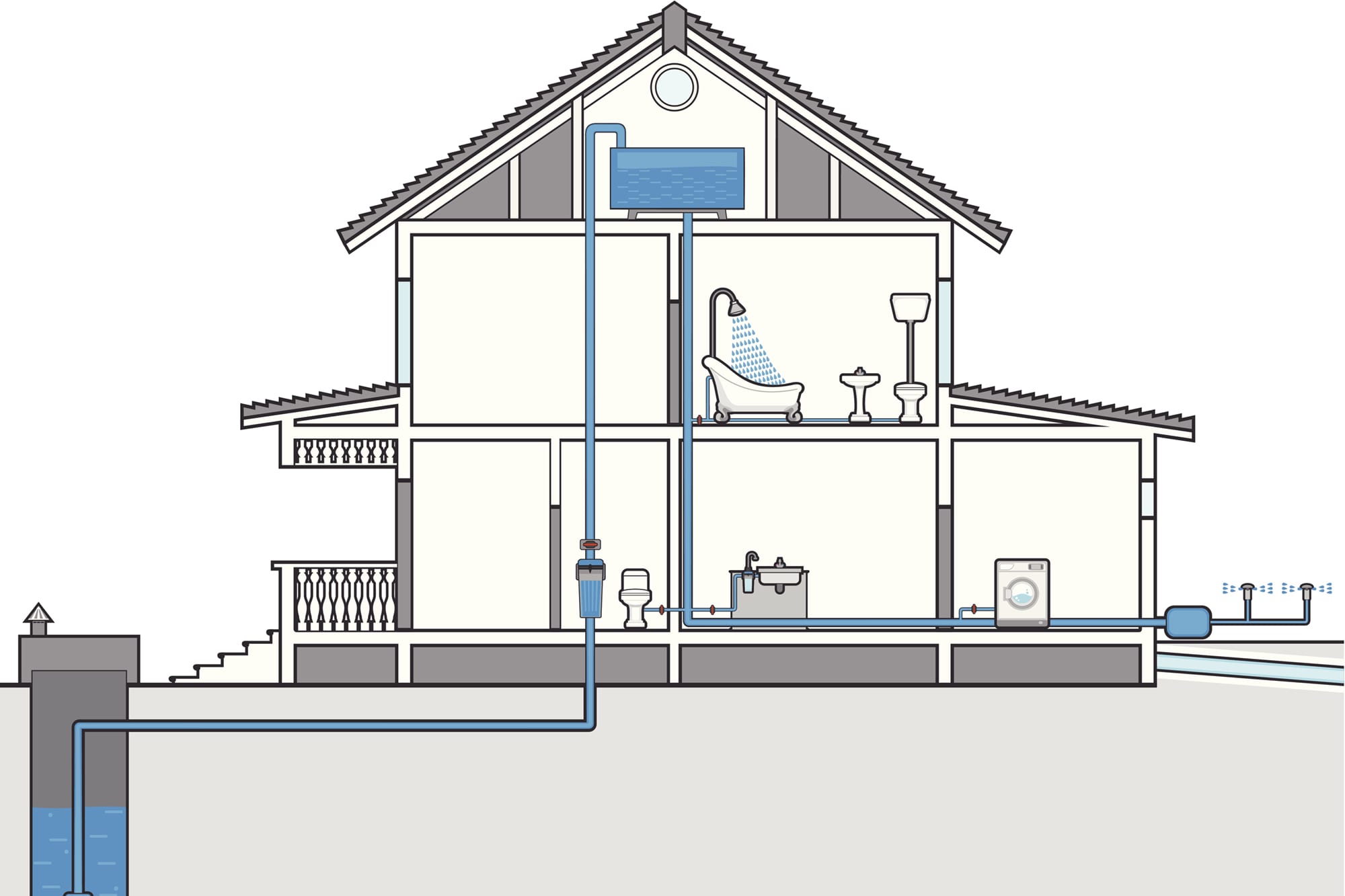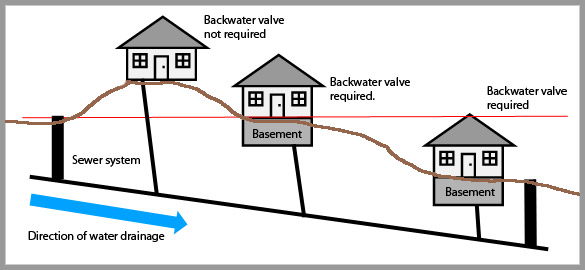The Main Elements of Your Home's Plumbing System
The Main Elements of Your Home's Plumbing System
Blog Article
We have stumbled on this article on Understanding Your Home's Plumbing Anatomy down the page on the internet and accepted it made perfect sense to discuss it with you here.

Comprehending just how your home's plumbing system functions is crucial for every house owner. From providing tidy water for drinking, food preparation, and showering to safely eliminating wastewater, a properly maintained pipes system is critical for your family's health and comfort. In this extensive guide, we'll check out the elaborate network that comprises your home's pipes and deal suggestions on maintenance, upgrades, and handling common issues.
Introduction
Your home's plumbing system is more than just a network of pipes; it's a complex system that ensures you have accessibility to clean water and efficient wastewater removal. Knowing its components and how they work together can assist you avoid expensive repair work and guarantee whatever runs smoothly.
Basic Components of a Plumbing System
Pipelines and Tubing
At the heart of your plumbing system are the pipes and tubing that carry water throughout your home. These can be made of numerous products such as copper, PVC, or PEX, each with its benefits in regards to sturdiness and cost-effectiveness.
Fixtures: Sinks, Toilets, Showers, etc.
Fixtures like sinks, commodes, showers, and tubs are where water is utilized in your home. Understanding how these components link to the plumbing system helps in diagnosing troubles and intending upgrades.
Valves and Shut-off Points
Valves regulate the circulation of water in your plumbing system. Shut-off valves are critical throughout emergency situations or when you require to make repair work, allowing you to separate parts of the system without interfering with water flow to the entire residence.
Water System System
Main Water Line
The main water line attaches your home to the local supply of water or an exclusive well. It's where water enters your home and is distributed to various components.
Water Meter and Pressure Regulator
The water meter actions your water usage, while a pressure regulatory authority guarantees that water flows at a secure pressure throughout your home's pipes system, stopping damage to pipelines and components.
Cold Water vs. Warm water Lines
Understanding the difference between cold water lines, which provide water directly from the main, and warm water lines, which lug heated water from the hot water heater, assists in troubleshooting and preparing for upgrades.
Drainage System
Drain Pipes Pipeline and Traps
Drain pipelines bring wastewater far from sinks, showers, and bathrooms to the drain or septic tank. Traps protect against drain gases from entering your home and additionally trap particles that can cause obstructions.
Ventilation Pipelines
Ventilation pipelines enable air right into the drainage system, protecting against suction that might reduce drainage and create traps to vacant. Correct ventilation is vital for maintaining the stability of your pipes system.
Significance of Correct Drainage
Making sure correct drainage stops backups and water damages. Regularly cleaning up drains pipes and maintaining traps can protect against costly repair services and expand the life of your plumbing system.
Water Heater
Sorts Of Hot Water Heater
Water heaters can be tankless or standard tank-style. Tankless heaters warm water as needed, while tanks save warmed water for instant use.
Upgrading Your Pipes System
Factors for Upgrading
Upgrading to water-efficient components or replacing old pipes can enhance water top quality, reduce water expenses, and boost the worth of your home.
Modern Plumbing Technologies and Their Benefits
Check out innovations like clever leak detectors, water-saving toilets, and energy-efficient water heaters that can conserve cash and lower environmental impact.
Expense Factors To Consider and ROI
Calculate the ahead of time prices versus long-term savings when thinking about plumbing upgrades. Numerous upgrades spend for themselves via lowered energy costs and fewer repairs.
How Water Heaters Link to the Pipes System
Recognizing just how water heaters connect to both the cold water supply and hot water distribution lines helps in diagnosing issues like not enough warm water or leakages.
Upkeep Tips for Water Heaters
Consistently purging your hot water heater to get rid of debris, examining the temperature level setups, and evaluating for leakages can prolong its life expectancy and enhance energy effectiveness.
Typical Plumbing Problems
Leaks and Their Causes
Leaks can occur due to aging pipes, loosened installations, or high water stress. Attending to leakages immediately avoids water damage and mold growth.
Blockages and Obstructions
Clogs in drains and toilets are usually brought on by flushing non-flushable products or an accumulation of grease and hair. Using drainpipe displays and bearing in mind what decreases your drains can prevent obstructions.
Indications of Plumbing Problems to Watch For
Low water stress, sluggish drains, foul odors, or unusually high water costs are indicators of possible plumbing problems that need to be resolved immediately.
Pipes Upkeep Tips
Routine Inspections and Checks
Set up yearly plumbing inspections to catch issues early. Seek indications of leaks, deterioration, or mineral accumulation in faucets and showerheads.
Do It Yourself Maintenance Tasks
Simple jobs like cleaning tap aerators, checking for toilet leakages utilizing color tablet computers, or insulating exposed pipes in cold environments can avoid significant plumbing problems.
When to Call a Professional Plumbing Technician
Know when a plumbing problem requires specialist knowledge. Trying complicated repairs without appropriate knowledge can result in even more damage and greater repair work prices.
Tips for Minimizing Water Use
Basic habits like taking care of leakages promptly, taking much shorter showers, and running full tons of laundry and meals can preserve water and lower your energy bills.
Eco-Friendly Pipes Options
Consider sustainable pipes materials like bamboo for floor covering, which is durable and environment-friendly, or recycled glass for countertops.
Emergency Preparedness
Actions to Take Throughout a Plumbing Emergency situation
Know where your shut-off valves are located and just how to turn off the water system in case of a ruptured pipe or significant leakage.
Significance of Having Emergency Situation Calls Useful
Maintain call information for regional plumbers or emergency services easily offered for fast response during a pipes crisis.
Environmental Effect and Preservation
Water-Saving Fixtures and Home Appliances
Setting up low-flow taps, showerheads, and bathrooms can dramatically lower water usage without sacrificing performance.
Do It Yourself Emergency Situation Fixes (When Applicable).
Short-term repairs like utilizing air duct tape to spot a dripping pipeline or placing a bucket under a leaking tap can decrease damages up until a specialist plumbing professional arrives.
Conclusion.
Comprehending the composition of your home's pipes system encourages you to keep it properly, conserving money and time on fixings. By following regular maintenance routines and remaining notified concerning modern plumbing innovations, you can ensure your plumbing system operates effectively for many years to come.
HOW YOUR PLUMBING SYSTEM WORKS
Which Pipes Do What?
Blue lines = fresh water supply entering the building Red lines = hot water supply entering the building Grey lines = pipes carrying waste away from the building and venting pipes carrying gases away from the building (through the roof) YOUR MAIN PLUMBING SYSTEMS
There are two main plumbing systems that support your home s basic plumbing needs one that brings clean water into your home, and one that sends dirty water away from your home. Connected to the toilet, bath, shower, and other faucets in your home, these two systems keep your water flowing in the right directions.
ACCESSING FRESH WATER
Fresh and clean water is brought into your home through the main water supply line . Filtered through one pipe, this water is pressured to flow into the various fixtures in your home at any given time.
This water can be sourced from a well located on your property, a pond or river (mostly cottages), or, as in most cases, from the city s municipal water treatment centre. However, it is important to note that water that is untreated, such as the water siphoned from ponds or rivers, may not be safe to drink. Personal water supplies always need to be treated for hardness and contaminants before consumed.
MUNICIPAL WATER SUPPLIES
Improve taste and odour Remove sediment Eliminate hardness Reduce chlorine COLD WATER SUPPLY VS. HOT WATER SUPPLY
Cold water flows into your home or building through the service line, which then distributes hot or cold water to your fixtures. This line is most commonly run through a central column that runs floor to floor. Hot water runs in short and straight pipes as the longer the pipeline, the more heat that will be lost in the transfer. Having shorter pipes also allows residents to access hot water more quickly.
WASTE WATER SYSTEM
Your wastewater system is divided into two parts pipes that send wastewater away from your home and venting pipes that send sewer gas away from your home. Sewage water travels through pipes that flush the water and waste towards local sewers that are operated and managed by your city or town. Most sewer systems rely on gravity to move the wastewater to where it needs to go.
The further away from your toilet or sink, the larger wastewater pipes become. This allows for waste to be disposed of from various parts of your home or business at once without pipe blockages. The angle and flow of these pipes are also essential for keeping your waste pipes clear of build up.
https://harrisplumbing.ca/how-your-home-plumbing-system-works/

We had been made aware of that report about Understanding Your Home's Plumbing Anatomy through someone on another domain. Enjoyed reading our piece of writing? Please quickly share it. Let another person check it out. Thanks a bunch for your time. Return soon.
Book Maintenance Report this page